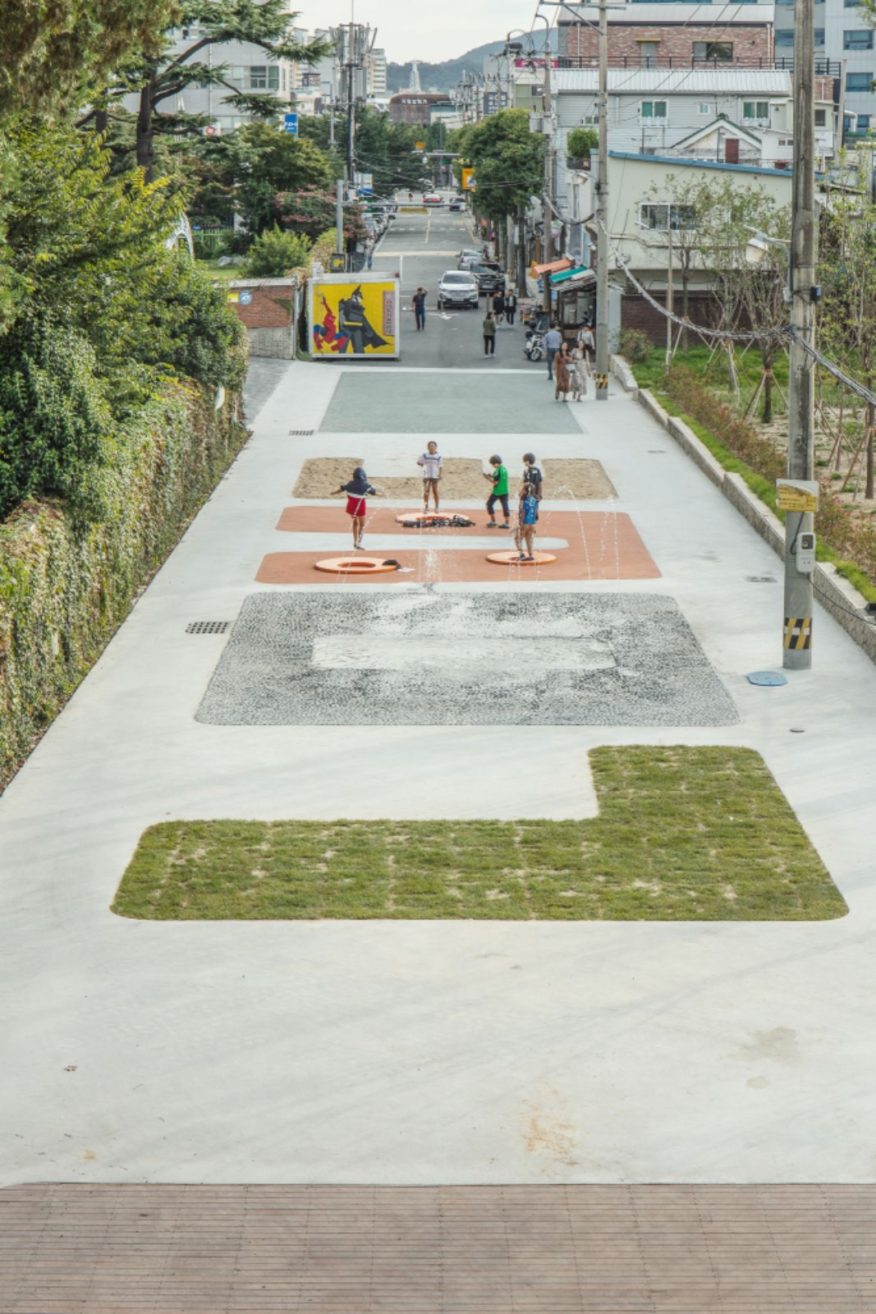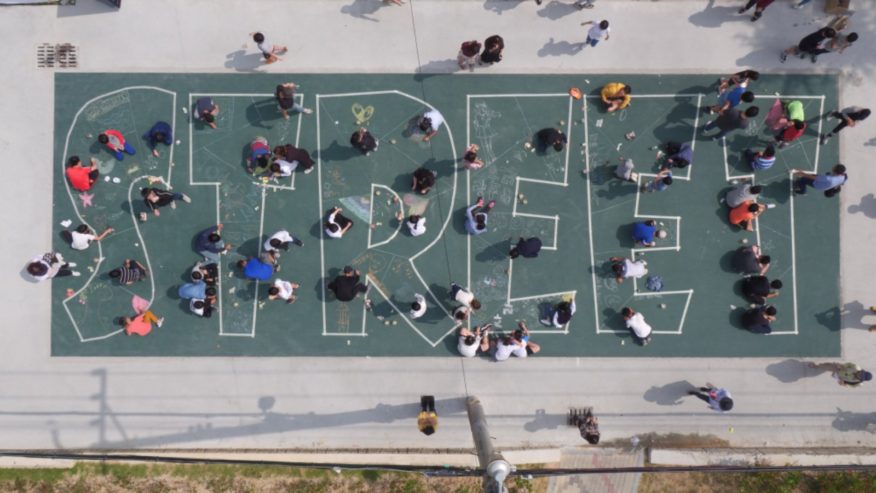
MVRDV realised I LOVE STREET in collaboration with students of the Seosuk Elementary School as one of the third edition of the Gwangju Folly The 960m2 permanent intervention explores how architecture contributes to urban regeneration by playing both decorative and functional roles in public spaces. The project was conceived in a participatory process.

Follies: Sense and Nonsense
Follies are, essentially, small interventions in urban spaces and although considered to be art pieces, they are somehow perceived as frivolous, temporary, and at times innocent and unserious. They are made by artists and architects, mostly on the basis of their own fantasies.

Gwangju 1
From 2011, Gwangju, follies located all across Gwangju are designed to achieve urban regeneration by providing a cultural rebirth to its downtown area after 40 years of rapid industrial growth. These interventions are a step in refocusing attention on abandoned areas of the city with the potential to transform them into more livable and pleasant areas as they develop in time.

Gwangju Folly Town
The decision a while ago to make a series of follies in Gwangju was a courageous and experimental first step. The follies are a phenomenon that no other city has developed. Thus, they are able to make the city of Gwangju sexier, more attractive, and more widely known. This now starts to come down to one thing other cities don’t have: a Folly Town.

Folly Research
By comparing Gwangju to other cities in Korea and around the world, its strengths and weaknesses have been evaluated. Gwangju, for instance, seems less walkable than other cities, and has insufficient public transportation, less attractive for tourists, has fewer green spaces, and is less cool in the summer than other cities and features fewer libraries, exhibitions, theatres, sports venues, playgrounds, and urban events than many cities.

The “I Love” Street Folly
In collaboration with Seoseok Elementary School, a series of their requests has been explored. That has led to multiple different pavements that can be used for sitting, painting, jumping on trampolines, and playing in the sand. By shaping these pavements in a series of letters, a true text appears, indicating people’s love for many things through ‘I LOVE’. I LOVE can thus become I LOVE KOREA, I LOVE KIM, I LOVE WALKING, I LOVE THE MAYOR, I LOVE GWANGJU, or I LOVE YOU, for example.

This text can be seen from a special tribute spot at the beginning of the street. This tribute also provides access to a platform that is five meters high, with a bench and a table. From here, the gardens can be viewed and a selfie can be taken. The chalkboard space is transformed into a dance floor every evening with special lights, while love songs from Jeroen Kooijmans will be played to get people dancing – I LOVE DANCING!

What’s Next?
Within the current time frame and budget, the I LOVE folly and street has been realized. But why not follow through with the rest, and even more? If this can be achieved then it will create possibilities to walk around the emerging city and soak in its observations on the future. Folly Town. Source by MVRDV.

- Location: Gwangju, South Korea
- Architect: MVRDV
- Principal: Winy Maas, Jacob van Rijs and Nathalie de Vries
- Project Team: Winy Maas, Wenchian Shi, Kyosuk Lee with Dongmin Lee, Bowen Zhu and Sen Yang Partners
- Construction: Gongjeong Construction co.
- Client: Gwangju Biennial Foundation
- Size and Programme: 960m2 public square
- Year: 2017
- Photographs: Gwangju Biennale Foundation, Courtesy of MVRDV

